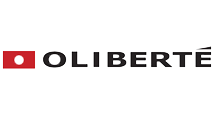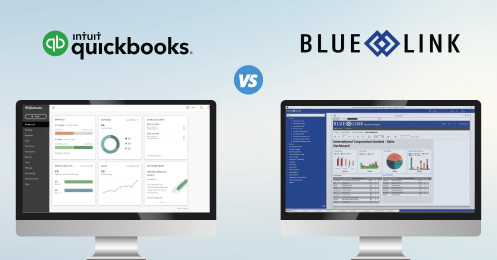Understanding the Landscape of Integration in Business
Imagine that you are a multi-generational family-owned business that sells office décor to other businesses.
As your business grows, so do the challenges of managing its operations efficiently, especially with the transfer of information such as your customer, inventory, and shipping information. In today's rapidly evolving digital landscape, manual processes are no longer sufficient to keep pace with demands and market trends. To remain competitive, businesses that already have some kind of business management solution in place must embrace integrated add-ons that facilitate seamless communication and data exchange between various systems and platforms.
Consider the scenario of selling your products to an online store like Amazon or Shopify. These platforms, integrated with your existing systems will offer immense potential for reaching and satisfying a broader customer base, but they can also pose significant challenges if not integrated correctly.
In this article, we’ll look at common integration challenges and benefits and we’ll examine two integration case studies, one looking at eCommerce integration and the other looking at EDI.
Key Integration Challenges:
- Integration Configuration
- Complex Landscape
Integration Configuration
One of the most noticeable challenges a business will face is configuring seamless data synchronization and compatibility between different systems and platforms. Manual data entry and legacy systems often result in inconsistencies in data formatting and compatibility issues, hindering smooth communication and integration. For instance, transferring data between different partners and departments can be cumbersome due to format incompatibility, leading to errors and delays in data processing. Having a seasoned integrator with expertise in integration is essential for ensuring a smooth and successful integration process. Without the guidance of an experienced partner, businesses may encounter challenges that could impact their long-term operations. It is imperative to have someone who can effectively manage the integration process and stability while being able to navigate any potential obstacles that may arise.
Additionally, as businesses store a diverse range of data types, managing and synchronizing this data across systems becomes increasingly complex.
Complex Landscape
Integrating involves utilizing APIs and web services to facilitate communication between software systems like ERP solutions and external platforms, enabling automated data retrieval, transformation, and transfer. Utilizing distinct APIs and specific integrators can present challenges for businesses unfamiliar with the connectivity landscape. Various integration methods exist, including AS2 connections and EDI, each with its own unique data formats, APIs, and protocols, complicating the integration process significantly.
Establishing and maintaining secure connections like AS2 connections can be complex. Integrators specialize in this domain, handling the setup and maintenance of secure connections and data transfer between systems, alleviating businesses from the complexities of dealing with file transfer issues.
Without robust integration solutions, businesses may struggle to automate crucial processes such as order processing, inventory management, and fulfillment. This lack of automation leads to inefficiencies and missed growth opportunities.
According to a report by Crossbeam - Partnerfleet, Integration helps prevent churn rates by up to 50%, which highlights not only the importance of integration for business expansion but also for ensuring long-term customer retention.
Key Integration Advantages:
Businesses are constantly seeking ways to streamline processes, enhance efficiency, and drive growth. By seamlessly connecting disparate systems and platforms, integration offers a myriad of benefits that are crucial for thriving in today's dynamic business environment. Let's explore the multifaceted advantages of integration:
- Cost Reduction and Heightened Productivity
- Seamless Data Transfer and Collaboration
- Synchronization of Data
Cost Reduction and Heightened Productivity
A single software system is usually crafted to streamline or oversee a singular business operation. The epitome of a comprehensive solution is an Enterprise Resource Planning (ERP) system. These all-in-one ERP systems are tailored to handle the fundamental business processes that are universal across most companies, such as accounting or inventory management. Additionally, they can accommodate other processes that vary from company to company, such as tax management, shipping, or compliance rules through integration with other software systems.
Integrated solutions play a pivotal role in minimizing operational costs and maximizing productivity. Without integration, businesses may incur unnecessary expenses by relying on external services and they might see a need to hire, incurring more salary costs. Moreover, manual data entry tasks not only drain resources but also introduce the risk of errors, leading to revenue loss and decreased productivity.
By integrating directly into existing systems, businesses can automate tedious tasks, mitigate errors, and free up valuable employee time for more strategic endeavors. This not only reduces operational costs but also enhances overall productivity, enabling teams to focus on value-added activities that drive business growth.
Seamless Data Transfer and Collaboration
In today's interconnected business landscape, seamless data transfer is paramount for fostering collaboration and maintaining a competitive advantage. However, manual data transfer processes between different platforms can be cumbersome and error-prone, hindering operational efficiency and straining relationships with partners and suppliers.
Consider the furniture scenario discussed earlier. If you begin selling your products on Amazon in addition to serving B2B customers, having Amazon directly integrated into your backend business management system enables you to effortlessly view both B2B and B2C customers within a single tool. This eliminates the need for manual data entry or toggling between platforms—everything occurs automatically.
By automating data transfer processes, businesses can ensure that information flows smoothly across various platforms, facilitating collaboration and enhancing operational agility. This not only strengthens partnerships but also enables businesses to respond swiftly to changing market demands and customer preferences.
Synchronization of Data: A Key Benefit of Integration
Central to the concept of integration is the synchronization of data, which facilitates seamless communication and collaboration across various systems and platforms. By synchronizing data in real-time, businesses can ensure that all stakeholders have access to the most up-to-date information, enabling faster decision-making and better business outcomes.
Moreover, data synchronization eliminates the need for manual data entry and reconciliation, reducing the risk of errors and ensuring data consistency across the organization. Manual data entry processes are inherently prone to errors and inconsistencies, leading to inaccuracies and inefficiencies in decision-making processes.
By seamlessly updating inventory levels, syncing customer information, and sharing sales data with partners, integration empowers businesses to effortlessly synchronize data, driving efficiency and elevating operational excellence. In addition, integrated systems offer real-time data insights, empowering informed decision-making and strategic planning. From monitoring inventory levels to analyzing sales performance and understanding customer behavior, integrated systems equip businesses with the essential tools for achieving business success.
Integration is not just a technological solution but a strategic imperative for modern businesses. By reducing costs, facilitating collaboration, and synchronizing data, integration empowers organizations to achieve operational excellence and stay ahead of the competition. Embracing integration is not merely a choice; it's a necessity for businesses looking to thrive in today's fast-paced and interconnected world.
The following case studies highlight the power of integration and what it can achieve for a business
Case Study: ECS Coffee Integrates with eCommerce Marketplace
ECS Coffee, a prominent coffee equipment supplier in Canada, faced challenges in integrating its backend system across various channels. Tracking sales to customers was cumbersome, hindering their ability to effectively plan pricing, profitability, and margins. Moreover, their operations suffered from inefficiencies stemming from outdated methods like managing inventory with a whiteboard, proving unreliable.
Upon implementing Blue Link ERP, ECS Coffee witnessed enhanced inventory management and overall operational efficiency. Leveraging Blue Link ERP's integration with eCommerce platforms such as Magento and Shopify, facilitated by VL OMNI as the integrator, ECS Coffee experienced streamlined processes.
Through ERP software eCommerce integration, ECS Coffee now seamlessly monitors the flow of order placements between the ERP software and eCommerce site, further optimizing their business operations.
To further demonstrate what a game changer this is, imagine your furniture company has already implemented automation within your system; when a new web order appears from Shopify, the payment amount will automatically find an account match in your system and print a pick slip in the warehouse. Alternatively, if your business uses mobile apps to manage your warehouse, it can automatically update the order for warehouse workers to perform the next sequence of actions, all without human intervention!
Case Study: Oliberté uses EDI Integration for partnerships
Oliberté is a garment company that primarily sells fair trade-certified shoes. The business operates on multiple business channels, which include retail, eCommerce and B2B Sales.
The issue stemmed from their systems lacking integration with Electronic Data Interchange (EDI), causing challenges in collaborating with their retail partners. Furthermore, tracking costs and inventory proved troublesome due to geographic barriers and the absence of an efficient data flow system, resulting in delays.
Oliberté determined that their best solution was to find software that could better manage their operations. They decided on Blue Link ERP which provided them with the necessary functionalities they needed to manage inventory and accounting.
Blue Link’s ERP was able to use EDI integration for Oliberté, which helps standardized file formats used to exchange data between the business and their retail partners. For a full understanding of EDI, check out this article: What Does EDI Stand for in Business? (bluelinkerp.com)
Integration with eCommerce and EDI tools have both been proven successful for ECS Coffee and Oliberté. Here are some of the benefits they experienced:
- Manual processes have been automated, decreasing errors in data entry.
- Accessibility to real-time information.
- Customer accessibility: With eCommerce integration, ECS Coffee's customers are now able to place orders at any time of the day without having to visit a physical store.
- Enhanced inventory tracking: Integration enabled both companies to synchronize inventory tracking across multiple sales channels, providing real-time visibility into stock levels and reducing the risk of stockouts or overstocking. Plus, synchronized inventory tracking between sites, such as landed tracking cost, improves profitability reporting.
- Automated order handling through EDI: Integration with EDI streamlined the order handling process, allowing Oliberté to automate order processing, invoicing, and shipment notifications, resulting in faster order fulfillment and improved customer satisfaction.
- Easy access to order history: Integration provided both companies with easy access to comprehensive order history, allowing them to track orders, monitor customer preferences, and analyze sales trends more effectively.
- Improved profitability reporting: The ability to generate accurate profitability reports by tracking costs and revenue associated with each order, providing valuable insights for strategic decision-making and business planning.
- Enhanced productivity: By automating manual tasks and streamlining workflows, integration improved productivity across the organization, enabling the businesses to focus on value-added activities and drive business growth as workers no longer need frequent direct interactions with orders.
- Streamlined order processing: Integration facilitated seamless communication between different systems, streamlining the order processing workflow and reducing errors and delays in order fulfillment.
Now back to your furniture company. Once an order is placed through EDI, it seamlessly enters your system, triggering automated processes. For instance, invoices are generated and sent automatically, inventory levels are updated in real-time, and shipping details are transmitted directly to logistics partners. This streamlines operations, reduces manual errors, and enhances efficiency, ultimately improving customer satisfaction.
Next Steps:
Now that you've gained insight into the myriad benefits of integration, it's time to take actionable steps to leverage this powerful tool for your organization's success. Start by evaluating your business processes to ensure they're scalable, considering specific challenges such as software requirement limitations and the ease of employee onboarding. Some integration solutions may not have the capability to meet all your requirements, so it's essential to choose a vendor that can address your unique needs.
Additionally, prioritize user-friendly software that minimizes training time, ensuring seamless adoption across your team. A reputable vendor with industry expertise can offer tailored solutions and may even provide customization options to bridge any gaps in functionality. Once you've identified potential solutions, selecting the right integration partner is crucial. Collaborate closely with your chosen partner to develop a comprehensive strategy that anticipates and accommodates future growth while addressing any specific challenges your organization may face. By following these steps, you can unlock the full potential of integration to optimize operations, drive sustainable growth, and stay ahead in today's competitive landscape.
 |
Guest Post: Darrell Li
Darrell Li is a student pursuing a Bachelor's degree in Business Technology Management (BBTM) at Wilfrid Laurier University. He is currently working as a technical writer intern for Blue Link. Outside of his academic and professional pursuits, Darrell finds enjoyment in exploring the great outdoors through activities like camping and biking. He's also an avid language learner and an enthusiastic musician who plays the saxophone and piano, finding solace and inspiration in music.
|












